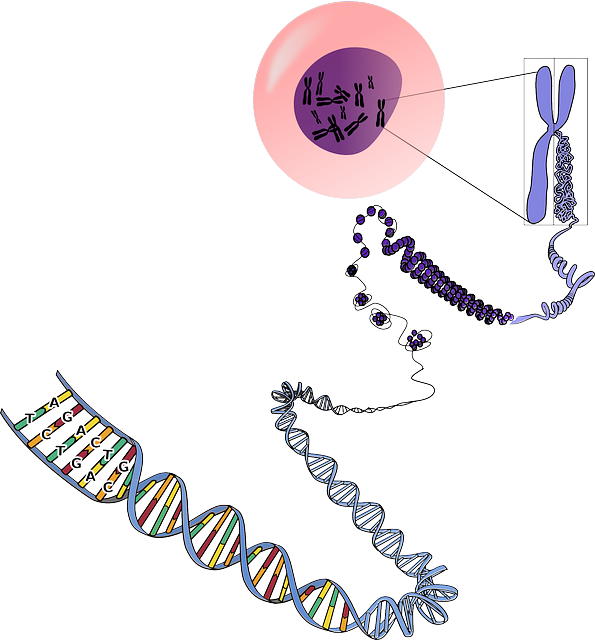What is a chromosome?
What is a chromosome? The simple answer is, chromosomes are self-replicating component of cells which contain linear array of genes, or nucleotide sequences of DNA.
A deeper look into chromosomes
Every human possesses 46 chromosomes, or 23 pairs. Each of the chromosomes is comprised of two halves, called sister chromatids, that are connected in the middle by which gives it a shape like the letter ‘X’. The constriction point between the two halves is called centromere.
The two halves of the chromosomes contain genetic material originating from the two parents, which are copied during mitosis. This allows each half of the chromosome to hold a set of genes containing the complete hereditary data of the parents. Despite the replication, the genetic code of the genes within the chromosome is unique to an individual, unless the individual has an identical twin.
Typically, the dominant trait in one of the two genes will be used as a blueprint in the construction of proteins. For instance, the black eyes genes are more dominant compared to the blue eyes ones, so the former will almost always be expressed in an offspring.
Function of the Centromere in Chromosome
The constriction point, or centromere, is made up of a complex combination of DNA and nucleotides. They ensure the accurate division of cells and play a vital role in the precise isolation of chromosomes. Various researches over the years have shown that the absence of centromere will cause chromosomes to segregate randomly and ultimately break away from cells. Additionally, chromosomes with more than one centromere tend to break down from irregular fragmentation.

Function of the Telomere in Chromosome
The cyclical and repetitive strands of DNA on the edges of chromosomes are known as telomeres. They fulfil one singular function – they prevent DNA strands from unravelling from their tightly coiled condition. However, the efficiency of telomeres varies, and as such, they tend to lose a fraction of the DNA after every cellular division. Over time, the cell would still die. However, in the absence of telomeres, the cells would probably fray and die within days – even hours.
Categories of Chromosomes in Humans
Chromosomes are scattered irregularly and are exceptionally difficult to detect before cell division. However, when cell division occurs, they become much more visible. It is during this period that scientists can observe, photograph and analyse their morphology and reactivity. Findings from such observations tells us that there are two categories of chromosomes, namely,
- Autosomes: Autosomes make out 44 of the 46 chromosomes in humans. They contain genetic hereditary data and phenotypic characters.
- Allosomes: Also known as heterosome, allosomes are sex chromosomes which determine the gender of the offspring. They make out just two out of the 46 chromosomes found in human.
Types of Chromosomes
Aside from the two categories above, chromosomes can be further divided into four types based on the location of the centromere.
(i) Metacentric Chromosomes
A single centromere is located centrally between two sections of equal size. In humans, chromosomes 1 and 3 are known as metacentric.
(ii) Submetacentric Chromosomes
The centromere is located slightly from the centre, which frequently turns the structure into an ‘L’ shape. In humans, chromosomes 4 to 12 are known as submetacentric.
(iii) Acrocentric Chromosomes
The centromere is located very far from the centre, which makes the two halves massively different in shape and sizes, making them hard to detect. Interesting, the random fusion of two acrocentric chromosomes can sometimes lead to the materialisation of a single metacentric chromosome. In humans, chromosomes 13, 15, 21 and 22 are known as acrocentric.
(iv) Telocentric Chromosomes
The centromere is located at the extreme end of the chromosome, which is also known as the monarchical or subtelocentric chromosome. This variant is not found in humans.

